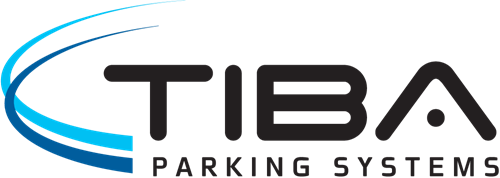PanStreet International: Rethinking Infrastructure Retrofitting for Autonomous Parking
Practical Steps Toward a Smarter Future

The conversation around autonomous vehicles (AVs) often focuses on the cars themselves: their sensors, intelligence, and behavior. But if we zoom out for a moment, it becomes clear that the spaces where these vehicles operate—particularly parking facilities—are just as crucial to delivering a seamless experience.
At the recent AI in Parking event in Maastricht, a key dilemma emerged:
Do we need to retrofit our parking infrastructure entirely to welcome autonomous vehicles, or is there a smarter, more incremental way forward?
Let’s explore that.
The Prestige Case: Daimler & Bosch in Baden-Württemberg
A shining example of what's technically possible is the prestigious parking facility in Baden-Württemberg, Germany, where Daimler and Bosch collaborated to deliver a fully autonomous valet parking experience.
In this showcase, the vehicle receives its parking command via smartphone and independently finds a free space—without human supervision. The entire system is powered by car sensors, smart infrastructure, and real-time coordination between the two.
It's an impressive technological feat. But it also raises a critical question for operators and city planners:
Is this level of investment scalable or even necessary across all facilities?
The Tesla Mindset: Vision Over Overkill
Tesla has famously resisted LiDAR in favor of vision-based systems—arguing that a camera-equipped vehicle can “see” the world much like a human. This way of thinking offers a valuable lesson for the parking industry:
Instead of overengineering every car park, what if we empower vehicles to navigate naturally using the visual cues already present in a well-designed facility?
This opens the door for a more practical, scalable approach to infrastructure readiness:
Practical Baby Steps Toward AV-Ready Parking
Here’s what we can do—today—without waiting for full retrofits:
- Mark AV-Dedicated Spaces: Start with clearly marked zones or signage for autonomous vehicle drop-off, pick-up, or idle parking.
- Improve Visual Cues & Wayfinding: Use standardized markings that vision-based AVs can interpret reliably—paths, arrows, curb edges, and entry/exit indicators.
- Adopt Free-Flow Layouts Where Possible: Reduce physical barriers (e.g. ticket machines, boom gates) and enable easier autonomous navigation.
- Collaborate with OEMs: Parking professionals should have a seat at the table with autonomous car manufacturers. We are the last-mile experts—and our input is key to creating intuitive, efficient user experiences in real-world conditions.
Let the Idea Mature—Without Raising Hurdles
We don’t need to force every structure to undergo a massive transformation. The best way forward is to let the AV-parking integration evolve naturally, with smart, incremental improvements and feedback loops between cities, infrastructure providers, and AV developers.
The goal is not just high-end demonstrations—but scalable, real-world solutions that work for every city, every car park, and every user.
Your Thoughts?
As autonomous driving becomes a reality, how is your city or facility preparing? Do you believe in a full retrofit—or in smarter, simpler steps first?
Let’s bring the parking community and the OEMs into the same room. That’s where the real progress begins.
by Hecham Haykal
CEO PanStreet/Schweers
About PanStreet International 
In 1988, Schweers developed and manufactured the very first handheld mobile computer with an integrated printer designed for parking enforcement. Now, 30 years and 1,200 municipal customers later, our success is still based on the same fundamental principles. Innovation, ingenuity, quality, and long term goals are the foundation of Schweers' success. By working hand in hand with our customers and partners, we are able to empower each other and find mutually beneficial solutions. From working together, customers in the USA benefit from the lessons learned in Australia, and those in Australia learn from solutions developed in the United Arab Emirates, and thus the circle continues. At Schweers we believe that common goals can only be reached through extensive collaboration.




Comments
There are no comments yet for this item
Join the discussion